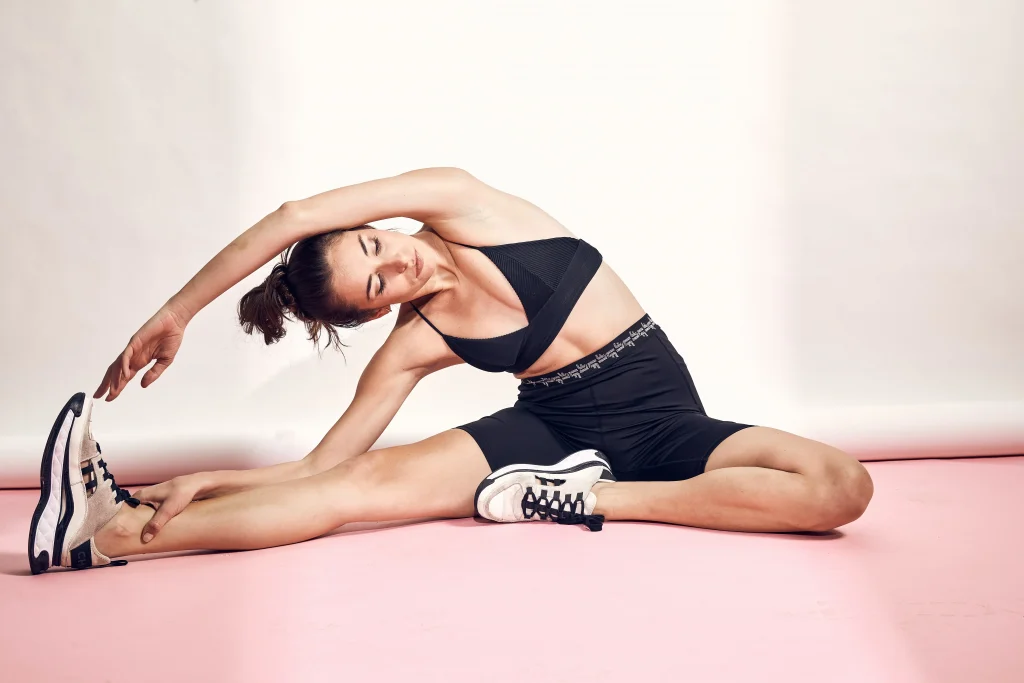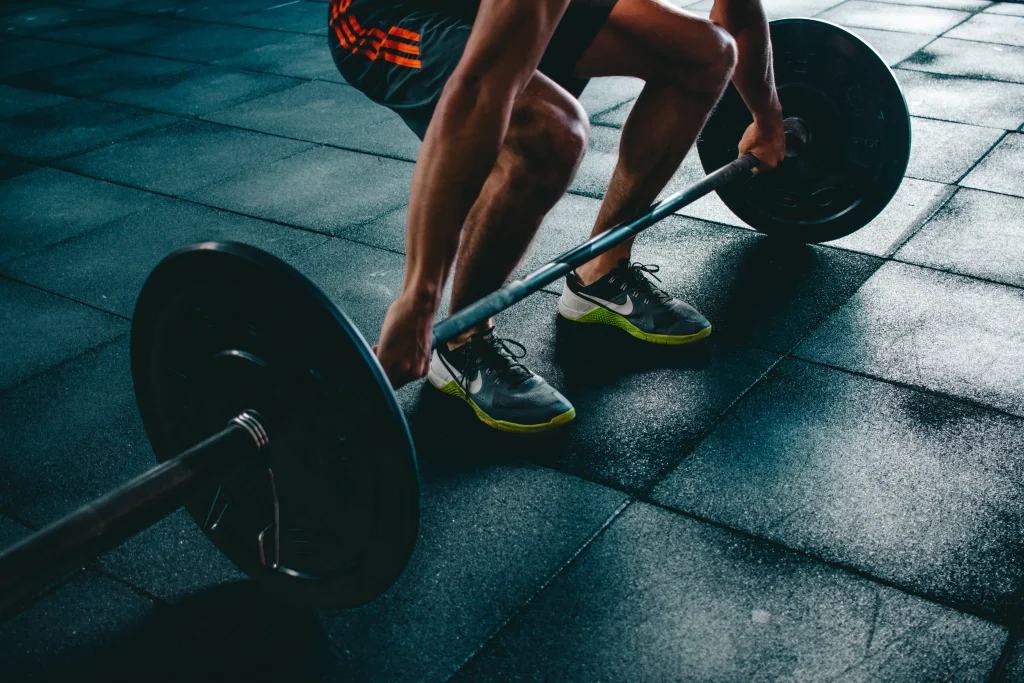Workout is a physical activity that is specifically designed to improve your fitness level. It typically includes a series of exercises that are performed in a specific order and may involve the use of equipment such as weights, resistance bands, or other types of fitness equipment. A workout is a period of physical exercise that is intended to improve physical fitness, health, or other aspects of physical performance. Workouts can vary in intensity, duration, and type, depending on the specific goals of the individual. Some common types of workouts include cardio (such as running or cycling), strength training (such as lifting weights or using resistance bands), and flexibility training (such as yoga or stretching). Regular physical activity and exercise can help improve physical and mental health, increase energy levels, and enhance overall well-being.
BEST WORKOUT FOR BEGINNERS
There are many effective workouts for beginners, but the best one for you will depend on your fitness goals and preferences. Here are a few options to consider:
BODYWEIGHT WORKOUTS
These workouts use your own bodyweight as resistance, so they can be done anytime, anywhere with no equipment. They are a great way to build strength and improve your body control. Examples include push-ups, squats, and lunges. Bodyweight workouts should modify to suit different fitness levels by adjusting the number of repetitions, the duration of the workout, or the intensity of the exercise. For example, you can make a bodyweight workout more challenging by holding a plank for a longer period of time, doing more repetitions of an exercise, or using a more difficult variation of an exercise. Bodyweight workouts can be incorporated into a larger exercise program or done on their own as a standalone workout. They are a convenient and effective way to get in shape and improve your overall physical fitness.
YOGA
Yoga is a low-impact workout that can improve flexibility, strength, and balance. It’s a great option for beginners because it can be modified to suit your fitness level and there are many different styles to choose from. It improves flexibility by stretching and tones the muscles, which can help improve flexibility and range of motion. Many yoga poses require you to support your own body weight, which can help build strength. Yoga requires you to focus and balance, which can help improve balance and coordination. It involves deep breathing, meditation, and relaxation techniques, which can help reduce stress and promote feelings of calm and well-being. Some styles of yoga, such as Vinyasa, can provide a cardiovascular workout and help improve heart health.

SWIMMING
Swimming is a great full-body workout that is easy on the joints. It can improve cardiovascular fitness and muscle strength. If you are new to swimming, it’s a good idea to start with shorter distances and build up your endurance gradually. You should also familiarize yourself with the rules and regulations of the pool and swim in a safe and controlled manner. It’s always a good idea to consult with a doctor or a fitness professional before starting a new exercise program, especially if you have any pre-existing medical conditions.
WALKING
Walking is a simple and easy way to get start with exercise. It’s a low-impact activity that can improve your cardiovascular fitness and strengthen your muscles. To make the most of your walking workout, it is important to walk with good posture and technique. Stand up straight, engage your core muscles, and swing your arms naturally. Focus on taking long strides and landing on your heel, rolling through the foot to push off with your toes. It is generally recommended to aim for at least 150 minutes of moderate-intensity physical activity, such as brisk walking, per week. This can spread out over the course of the week, with at least 10 minutes of activity at a time.
RESISTANCE BAND WORKOUTS
Resistance bands are a cheap and portable way to add resistance to your workouts. They are a great option for beginners because they can easily adjust to suit your fitness level. Resistance bands are stretchy bands that provide resistance when you try to stretch them. They are a popular tool for strength training and can be used to perform a wide range of exercises that target various muscle groups. Some examples of resistance band workouts include:
Squats: Stand on the band with your feet shoulder-width apart and hold the ends of the band in your hands. Perform a squat by bending your knees and lowering your hips as if you were sitting back into a chair.
Lunges: Stand on the band with one foot and hold the ends of the band in your hands. Step forward with the other foot and lower your hips until both knees are bent at a 90-degree angle.
Bicep curls: Stand on the band with your feet shoulder-width apart and hold the ends of the band with your palms facing up. Curl your hands towards your shoulders, keeping your elbows close to your body.
Tricep dips: Sit on the floor with your legs straight in front of you and place the band under your feet. Hold the ends of the band and lift your hips off the ground. Bend your arms to lower your hips towards the ground, then straighten them to lift back up.
Push-ups: Place the band around your back and hold the ends in your hands. Perform a push-up by lowering your body until your chest touches the ground, then pushing back up.
These are just a few examples of resistance band workouts. There are many other exercises that can be done with resistance bands, such as shoulder presses, rows, and lateral raises.
It’s important to choose a workout that you enjoy, as this will make it more likely that you will stick with it in the long term. As per MayoClinic, it’s also a good idea to consult with a doctor or a fitness professional before starting a new exercise program especially if you have any concerns or if you haven’t exercised for a long time or have chronic health problems, such as heart disease, diabetes or arthritis.

BENEFITS OF EXERCISE
There are many benefits to regularly participating in a workout routine, including:
- Increased muscle strength and tone: Strength training exercises can help increase muscle mass, which can improve your overall strength and tone.
- Better flexibility: Stretching and other types of flexibility exercises can help improve your range of motion and reduce the risk of injury.
- Improved mental health: Exercise has shown to reduce stress and improve mood by releasing endorphins, which are chemicals that act as natural painkillers and mood elevators.
- Weight management: Regular exercise can help you maintain a healthy weight or lose weight if that is your goal.
- Better sleep: Exercise can help improve sleep quality by helping you fall asleep faster and sleep more deeply.
- Increased energy: Regular exercise can help boost your energy levels by improving circulation and increasing oxygen delivery to your muscles.
It’s important to note that the benefits of exercise can vary depending on the type, intensity, and duration of the workout, as well as the individual’s age, fitness level, and other factors. It is generally recommended to aim for at least 150 minutes of moderate-intensity physical activity per week, such as brisk walking or cycling. This can spread out over the course of the week, with at least 10 minutes of activity at a time. According to NHS, “People who exercise regularly have a lower risk of developing many long-term (chronic) conditions, such as heart disease, type 2 diabetes, stroke, and some cancers”. It is also important to incorporate strength training exercises, such as lifting weights or using resistance bands, at least two days per week to help maintain muscle mass and bone density.

BASIC WORKOUT ROUTINE
Start with a warm-up. This can include light stretching, easy cardio (such as jogging in place), or any other activity that gets your heart rate up and prepares your muscles for the workout. Incorporate strength training exercises. These can include lifting weights, using resistance bands, or doing bodyweight exercises like push-ups, squats, and lunges. Aim to do at least one exercise for each major muscle group, and be sure to use proper form to avoid injury. Include cardiovascular exercise. This can be any activity that gets your heart rate up and keeps it there for an extended period of time. Examples include running, cycling, swimming, and dancing.
Don’t forget to cool down and stretch after your workout. This will help your muscles recover and can prevent soreness. Mix up your workouts to keep things interesting and to challenge your muscles in different ways. This can include trying new exercises, changing the order of your routine, or increasing the intensity or duration of your workouts. Remember to listen to your body and stop if you experience any pain or discomfort. It’s also important to consult with a healthcare professional before starting any new exercise program.
It is important for beginners to start slowly and then gradually increase the intensity. The duration of their workouts must increase as they become more fit. It is also important to choose activities that are enjoyable, as this will increase the chances of sticking with a regular exercise routine. It is a good idea for beginners to consult with a healthcare professional or a fitness professional before starting a new workout routine, particularly if they have any underlying health conditions or injuries. Beginners should also make sure to warm up before exercising and cool down afterwards to reduce the risk of injury. Overall, the key to a successful workout for beginners is to start slowly and progress gradually, choose activities that are enjoyable and sustainable, and pay attention to proper form and technique to reduce the risk of injury.